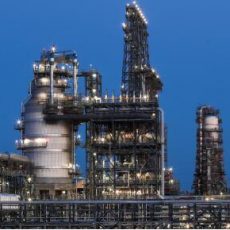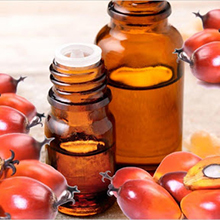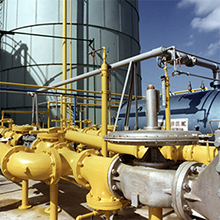Vacuum pump in Crude oil processed
To provide the best vacuum solution for each application, EVP needs to have a comprehensive understanding of the factors that affect the selection. Our engineers will take all requirements into consideration when designing each vacuum system: process mapping, specific measures, legal requirements and environmental factors, such as considering local climatic conditions, to ensure that the system can perform optimally. EVP provides tested vacuum pump and compressor systems for various oil & gas industry applications. All EVP vacuum systems are based on reliable and mature design and production, and can be tailored to provide the perfect solution for your application.

Gas recovery
In the oil & gas industry, the gas is released to the atmosphere. whether it is upstream production or downstream refining, gas recovery is a procedure for recovering hydrocarbon gas from storage tanks. Gas recovery can be achieved by the vacuum and compressing the gas from the storage tank. By using a liquid ring vacuum pump, it can be recycled, liquefied, and then reused.
The concept of “turning waste into treasure” is applied here, because it is economical to recycle most of the gas to be burned and use it as a source of energy and income. Reducing the unnecessary burning of gas to a minimum is not only beneficial to environmental protection, but also solves the problem of income and opportunity.

Crude oil distillation
A large amount of crude oil enters the vacuum distillation unit after atmospheric distillation, which is the most productive and important equipment in the refinery. The distillation column maintains the vacuum by using a multi-stage steam ejector device:
- Steam ejector (the first ejector connected to the distillation tower)
- Main condenser and degassing device, in some cases also equipped with steam ejector
- Liquid ring vacuum pump.
Jet vacuum pumps are usually used in conjunction with liquid ring pumps to keep the crude oil distillation tower under vacuum.
Combining these two pumps together with a simple and suitable control system can reduce the consumption of cooling water, electricity and power media.
Crude oil is processed to produce gasoline and other hydrocarbon fuels via atmospheric and/or vacuum distillation in refineries. This application involves applying a vacuum to a crude oil distillation column. The combination of heat and vacuum separates the crude oil into different components based on their boiling temperature (distillation). Its purpose is to enhance the recovery of the lighter components, such as gasoline. Vacuum distillation is more energy efficient than atmospheric distillation. Liquid ring vacuum pumps and steam ejectors offer reliable, low maintenance solutions for vacuum distillation of crude oil in refinery applications. Combining these technologies into an optimized hybrid vacuum system delivers an efficient solution that reduces greenhouse gas emissions.
Exhaust compression
The non-condensable hydrocarbon gas discharged from the crude oil distillation tower and other refining equipment is collected in an ordinary container, and discharged through a pipeline to be burned or discharged to a compressor. According to the required exhaust pressure, the compressor compresses the exhaust gas with a certain combustion value and burns it to recover energy. This process is usually very short. This kind of energy recovery is very important for environmental protection.
Filtration
Filtration refers to the collection of wax components in the production of hydrocarbon-based oils. Eliminating the wax component in the oil can improve the quality and applicability of the oil. The liquid ring vacuum pump continuously eliminates the vacuum of a disc or drum filter that may contain refrigerated MIBK nitrogen. If a higher degree of vacuum is required, a roots pump and liquid ring pump will be installed to work together.
Exhaust gas recovery
In the tail gas recovery device, the liquid ring compressor is a very ideal choice. One of the main reasons is that gas compression is basically performed isothermally, and its temperature is about 30 degrees Celsius to 50 degrees Celsius. In this way, it is possible to avoid the phenomenon of tail gas polymerization in the compressor due to high temperature that may be encountered when using other types of compressors.
Polyester production
In polyester production, the vacuum required in the reaction tower can be obtained by a composite vacuum system composed of a steam ejector and a liquid ring pump. Different from other applications, ethylene glycol (EG) can be directly used as the working fluid of the vacuum pump to facilitate the safe and reliable operation of the entire vacuum system.
PVC production
In the production process of polyvinyl chloride (PVC), the residual vinyl chloride monomer (VCM) in the reaction is first drawn out by the liquid ring vacuum pump and sent into the gas storage tank; then it is pressurized to about 0.7MpaA by the liquid ring compressor unit. It is stored in the VC recovery tank in liquid form for further reaction.
Copyright: EVP Vacuum Pump
(The article comes from the Internet. If reprinting is not allowed, please contact our company to delete it.)







